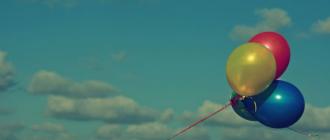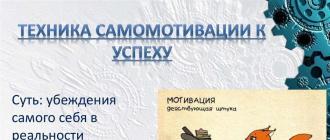Space. About space. In space. World of space. In the world of space. Open space. Space in books. Topic: "Space". We are flying into space. Space explorers. Physics and space. Space reconnaissance. Mathematics and space. Food in space. Space is far and near. Chemistry and space. Space tourism. The fight for space. “Space is everything that is, that ever was, and that ever will be.
View from space. The first woman to fly into space. Achievements of Russia in SPACE. “Space... is the world in which we live. Space is the future of humanity. Scientific discoveries in space. Space quiz. Cosmos Rus. Space: yesterday, today, tomorrow. Space pioneers. Cosmic alphabet. Lexical topic space. Journey into the world of space.
Why about space. Project “Flew into space. Space yesterday, today, tomorrow. Project Mysterious Space. Russian strategy in space. Project "Mysterious Space". Project “Let's fly into space. Thematic week"Space" in senior group. Achievements of space biology and medicine. He called us all into space. Milestones in space exploration...
How to clear space of debris. Mathematical journey into space. The Earth is a cosmic body of nature. A journey into the wonderful world of space. Karaganda is a space harbor. Space: from dreams to the future…. Major achievements in space exploration. Collection: Open Space. Dedicated to the hero of space. How Dunno was going into space.
Space in geographical designations of Moscow. A week primary classes- “Space Week”. Nanotechnology in space: from fiction to reality. Virtual tour of school No. 70 named after I. A. Leonov. Space images as a tool for interaction between society and government.
https://accounts.google.com
Slide captions:
SPACE
Look at these babies - they look at the night sky with interest! There are so many beautiful stars there! Since ancient times, people have loved looking at the stars, and they were very interested in what they really were like!
And then one day they decided to fly into space! To the stars! To fly into space, people built a space rocket. An astronaut was put into the rocket - it was he who had to control the rocket and fly to the stars.
But the fact is that it is very, very cold in space. If you go into space without a special suit, you can instantly freeze and turn into ice. In addition, there is very little air in space and a common person will not be able to breathe in it. That is why the astronaut who flew into space was wearing such a spacesuit. The suit is very warm and protects the astronaut from the cold even in space. In addition, a person can breathe in a spacesuit - it supplies the person with air.
The very first cosmonaut to fly into space was Yuri Gagarin.
When the astronaut got into the rocket, the countdown began: “Five, four, three, two, one, START!” The rocket took off from the ground, fire bursting from its tail - its engine was working so hard. And the rocket flew high into the sky.
She rose higher and higher! Look! She's already above the clouds!
And so the rocket ended up in outer space! This is what the astronauts saw in space!
This is our planet Earth - we live on it. As you can see, it is round – it looks like a big ball. Our planet is very, very large. That's why we don't notice that it looks like a ball. But if you rise high, high above the earth, then from space we will see it like in this picture.
Look, the blue spots on our planet are water - seas and oceans. Green spots are green forests and meadows. The brown spots are mountains. Isn’t it really very beautiful, our planet? And this small ball in the corner is our Moon!
Preview:
To use presentation previews, create a Google account and log in to it: https://accounts.google.com
Slide captions:
The moon from space is also visible as a ball. The moon is much smaller than our planet Earth.
This is what the Moon looks like if you fly closer to it.
And this is how the astronauts saw our Sun. A huge glowing fireball. But the astronauts could not fly close to the Sun - because the Sun is very, very hot. If you get too close to it, you might even burn out.
Other stars that we see from Earth are also suns. They are just so far away from us that they seem like just small dots.
And the astronauts saw planets in space that revolved around the Sun.
Look, this picture shows all the planets that revolve around the Sun. Notice how huge our Sun is! It is larger than all the other planets combined! And our planet Earth - here it is - the third from the Sun - is very small compared to other planets.
In this picture you can see how different the size of the planets are and how big our Sun is. From Earth, the Sun does not seem so big to us because it is very far from us. In fact, that’s how huge it is!
All planets solar system revolve around the Sun in their orbit. On those planets that are very close to the Sun - it is very hot - hotter than in a hot frying pan! We couldn't have stayed there for even a second! And at the most distant planets- which are far from the Sun - on the contrary, it is very cold, because the sun's rays do not reach there well.
That's how many interesting things astronauts can see in space! Now you know about all this too!
(Greek kosmos - structure, order, world, Universe) originally among the ancient Greeks (starting with Pythagoras 6th century BC) - the Universe as a harmonious organized system, as opposed to chaos, a disorderly accumulation of matter. From the Greeks the term "K." moved to modern science as a synonym for the Universe, space includes interplanetary, interstellar, and intergalactic space with all the objects located in it. From the concept "K." ( space) sometimes exclude the Earth with its atmosphere. In this sense, the term "K." (the term "near K." is also used) became widespread after the launch (1957) of the first artificial space object - artificial satellite Earth and began the study of the near-Earth and interplanetary environment using various types of spacecraft.
What is life like in orbit? Astronauts are usually scheduled to ascend into orbit at 7 a.m. The working day lasts about 10 hours on weekdays and 5 hours on Saturdays.
Food: Tubes of food for ISS workers are a thing of the past. Now they eat pre-freeze-dried (dehydrated) food, which they choose from a special menu.
Hygiene: If previously astronauts could only enjoy using wet wipes, now there is a bathhouse on the station, although its shape resembles a barrel. Toilets use a vacuum instead of water.
Equipment: spacesuits are used when launching the station into orbit. During docking, undocking, landing. And the rest of the time they wear more comfortable clothes, which are made of cotton. Buttons are not used in astronauts' clothing, as they can come off and fly around the station. Astronauts use shoes only when playing sports.
The First Cosmonaut spoke about this beauty
And it all started with him... Sergei Pavlovich Korolev (Soviet scientist, designer and organizer of the production of rocket and space technology and rocket weapons of the USSR, founder of practical cosmonautics. The largest figure of the 20th century in the field of space rocketry and shipbuilding. S.P. Korolev is the creator of the Soviet rocketry -space technology, which ensured strategic parity and made the USSR an advanced rocket and space power. He is a key figure in human exploration. space A. Thanks to his ideas, for the first time in the world, an artificial Earth satellite was launched and the first cosmonaut of our planet, Yuri, was launched Gagarin A.
And how not to believe in miracles! Now we know this for sure. The heavens have conquered us! And there are only stars above the sky! We are heading towards space, for a dream. May the sky become kinder and cleaner, May new heroes gain heights. Let space it will get closer to us.


